Each product page in the illustration will highlight a unique aspect. One page might demonstrate an exceptional layout with clean, intuitive navigation, ensuring users can easily find what they want. Another page could focus on high-quality product images, showing how clear and detailed visuals help make informed purchase decisions. Additionally, a page could be dedicated to showcasing user reviews and ratings, emphasizing their importance in building trust and credibility. Other elements include interactive elements like size guides or color options, persuasive and clear product descriptions, and strong calls to action.

The overall design of the image should be clean and modern, reflecting the cutting-edge nature of the best product pages. It should also be diverse in the types of products displayed, ranging from electronics to fashion, to give a comprehensive view of various industries. This complete blog will be an ideal guide for understanding what makes the best product pages stand out in the digital marketplace.
Product pages: What to know
Understanding the qualities of the best product detail pages is crucial for anyone looking to excel in eCommerce. A superior product page goes beyond mere aesthetics; it’s a strategic blend of functionality, user experience, and persuasive content that collectively drives conversions and customer satisfaction.
Firstly, the best product pages are user-centric. Designers create them with a clear understanding of the target audience’s preferences and pain points. This strategy includes an intuitive and easy-to-navigate layout, ensuring that potential buyers can effortlessly find the information they need.
Visuals
High-quality visuals are another hallmark of an outstanding eCommerce site. A product page isn’t just about having transparent, high-resolution images; it involves offering multiple views, zoom-in capabilities, and, if relevant, a 360-degree view. For example, a product example might be a piece of clothing, where the page provides detailed images from various angles, or an electronic gadget, where the photos highlight its different features and components.
In addition, the best eCommerce product page features detailed and persuasive product descriptions. These descriptions should go beyond basic features, encompassing benefits, usage suggestions, and even storytelling elements that connect emotionally with the user.
Social proof
Effective product pages also leverage social proof, such as customer reviews and ratings, which build trust and credibility. Incorporating user-generated content, like customer photos or videos, can be particularly impactful.
Another critical aspect is the optimization of mobile devices. With a significant amount of online shopping happening via smartphones, the best product detail pages ensure a seamless experience across all devices.
Moreover, these pages often include clear and prominent calls to action (CTAs), encouraging users to take the next step, whether adding the product to their cart or proceeding to checkout. The CTAs should stand out and be easy to find.
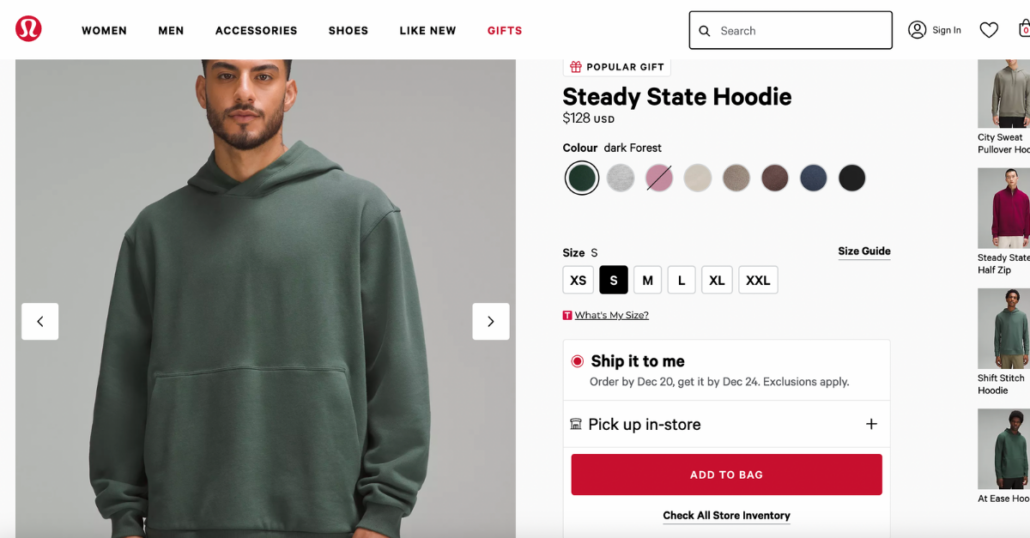
Finally, an excellent example is constantly evolving. It continually incorporates A/B testing, analytics, and customer feedback to refine and improve the user experience.
In turn, the best product detail pages are those that effectively combine functionality, visual appeal, comprehensive and engaging content, social proof, mobile optimization, and clear CTAs. They constantly change based on user feedback and analytics, ensuring they remain effective in a highly competitive eCommerce environment.

Best product page design
eCommerce is incredibly competitive, and effective design is critical for success. Here, we delve into examples of the best product page designs, showcasing diverse design ideas that stand out in the digital marketplace.
One stellar example of a product page design presents itself in high-end technology gadgets, like the latest smartphones or laptops. These pages often feature an immersive, interactive experience, allowing users to explore the product through 360-degree views and zoom-in functionality.
The sleek design focuses on high-resolution images and videos that demonstrate the effect in action. The product descriptions are concise yet comprehensive, providing technical specifications and benefits appealing to tech-savvy and average consumers.
Another example of products that benefit from outstanding page designs is fashion apparel. Here, the focus is on high-quality images showcasing the items from various angles. Good product page examples in this category often include videos of models wearing the products, giving customers a realistic view of how the clothes look in motion. Size guides, customer reviews, and options for different colors or patterns are prominently displayed, enhancing the user experience.
Home decor
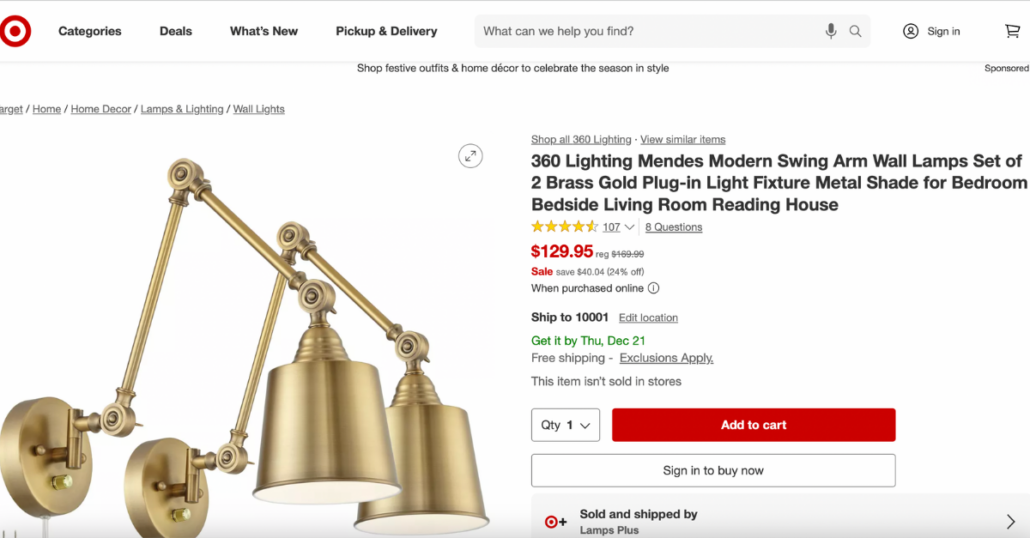
In the realm of home decor, effective designs blend beautiful imagery with detailed descriptions. For instance, a page for a luxury sofa might feature images of the couch in different room settings, providing inspiration for how it might fit in a customer’s home. Detailed descriptions of the materials, dimensions, care instructions, and customer reviews that add authenticity are crucial.
Health & Beauty
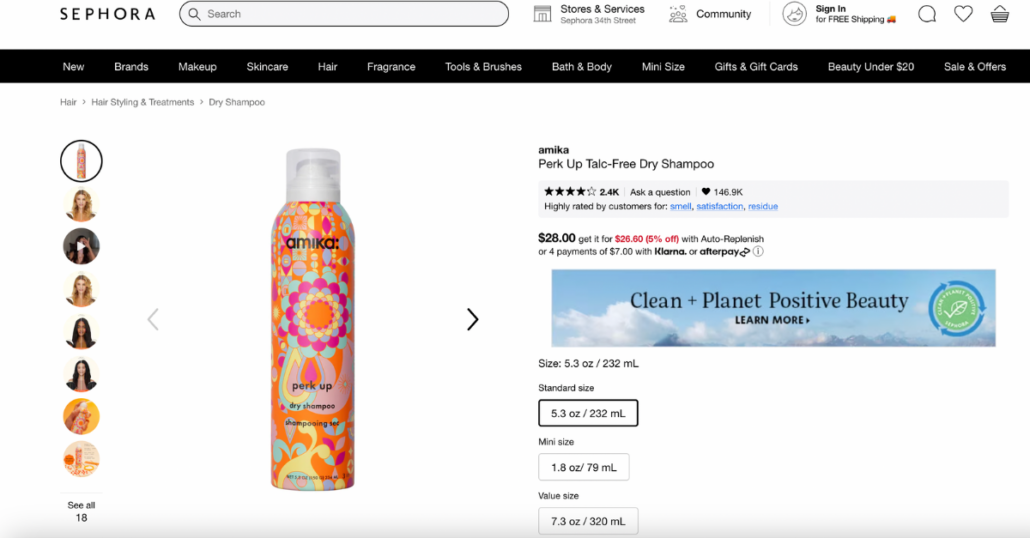
For health and beauty products, transparency is critical. Good product page examples in this category often include ingredient lists, usage instructions, and before-and-after photos. Interactive elements, such as quizzes where you find the right product for your skin or hair, can also enhance the user experience.
Lastly, brands often center the design around high-quality images and storytelling for gourmet food items. They might include the origin story of the ingredients, chef recommendations, and user-generated recipes. Such elements inform and create an emotional connection with the customer.
The best designs are those that not only provide detailed information about the products but also create an engaging and interactive experience for the user. Whether it’s technology gadgets, fashion, home decor, health and beauty products, or gourmet foods, each category has unique design elements that make their site stand out. These examples serve as a benchmark for what makes a successful and appealing eCommerce product page.
Best product detail pages
For most brands that rely heavily on eCommerce, the design and functionality of their product detail pages can significantly impact customer engagement and sales. Here, we delve into over 300 words of tips to create the best product detail pages, incorporating critical phrases like “product detail page examples,” “product information page,” and “shop page examples.”
Firstly, a stellar site must be visually appealing and intuitive. It should guide the customer seamlessly through the shopping process. High-quality images and videos are paramount. For instance, product detail page examples from leading fashion retailers often include:
- Multiple pictures from different angles.
- Videos of models wearing the product.
- Even interactive features like color swatches change the product image.
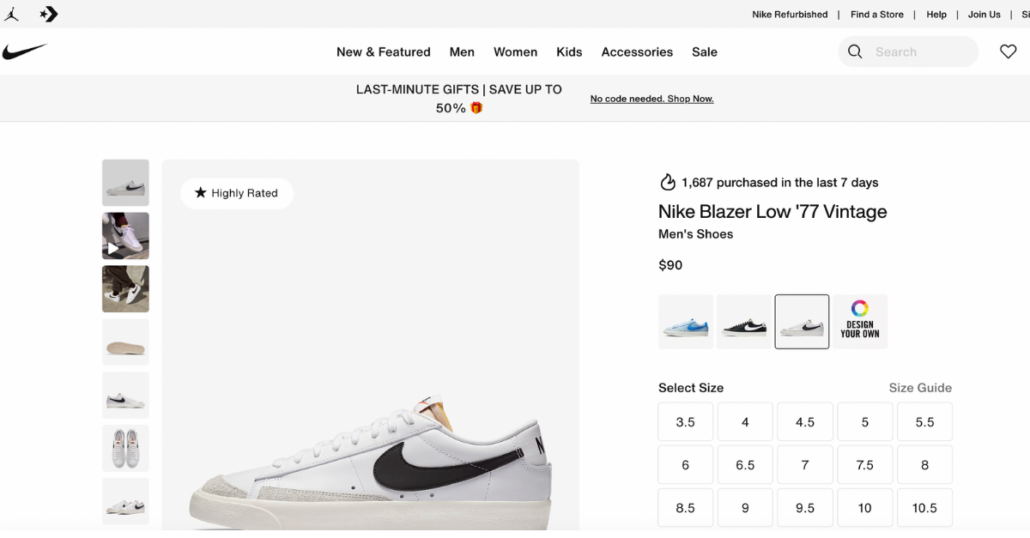
This visual richness not only helps in showcasing the product effectively but also enhances the overall user experience.
The product information page should be meticulously detailed. It must include all the relevant information a customer might need before purchasing. A good product page includes sizes, materials, care instructions, and technical specifications. For example, a tech gadget page should detail its features, battery life, compatibility, and warranty information. Clarity and comprehensiveness in product descriptions help reduce customer queries and potential returns.
Customer reviews
Moreover, incorporating customer reviews and ratings on the product detail page is a powerful tool for building trust and credibility. Real-life experiences and photos shared by customers can significantly influence purchasing decisions.
Another tip is to ensure the design optimizes for all mobile devices. A mobile-responsive design is essential, with a significant percentage of online shopping done via mobile phones.
Good shop page examples demonstrate the importance of an intuitive and easy-to-navigate layout. A brand should clearly define categories and quickly sort products based on price, popularity, and new arrivals.
Including related products or upsell items on the site can enhance the shopping experience and increase average order value. For instance, showing complementary products or accessories alongside the main product can encourage additional purchases.
In addition, a clear and prominent call-to-action (CTA) is crucial. Whether it’s ‘Add to Cart,’ ‘Checkout Now,’ or “Save for Later,” the CTA should be easily visible and enticing.
They combine high-quality visuals, comprehensive and clear product information, customer reviews, mobile optimization, intuitive navigation, effective cross-selling strategies, and compelling CTAs. When executed well, these elements create an engaging and informative shopping experience that can drive conversions and foster customer loyalty.
Product experience examples
In the competitive world of eCommerce, delivering an exceptional product experience is pivotal for standing out. The experience involves the product and its presentation and interaction on digital platforms. Here, we explore over 300 words on product experience examples, emphasizing critical phrases like “great product videos,” “examples product,” and “great product websites.”
Great product websites are the cornerstone of an outstanding online shopping experience. They are not just about showcasing products; they create an immersive environment that guides and engages the customer. For example, a leading electronics brand’s website often features sleek designs, intuitive navigation, and detailed product information. These sites use high-quality images and interactive elements like product comparisons and 3D views to enhance the user experience.
Videos
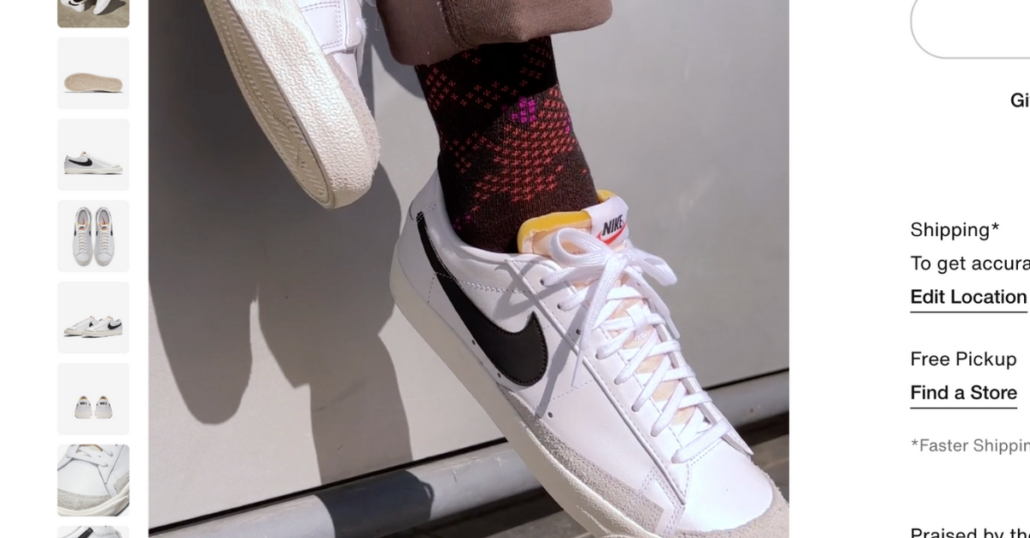
One of the key elements in modern eCommerce is the use of great product videos. The best videos offer a unique and dynamic way to showcase products, providing a more in-depth look than images alone. For instance, a clothing brand might use videos to show how a dress moves on a person, or a tech company might demonstrate how a new gadget works in real life. These videos can significantly boost customer engagement and understanding, leading to more informed purchase decisions.
Examples of product pages that stand out usually combine various elements harmoniously. These include high-quality visuals, comprehensive and engaging product descriptions, customer reviews, and often a story or background of the product or brand. This narrative approach not only informs customers but also connects with them on an emotional level, enhancing brand loyalty.
The importance of UX
Great product websites also excel in user experience (UX) design. They ensure the site is easy to navigate, loads quickly, and optimizes for mobile devices. The checkout process is streamlined and secure, with clear calls to action and minimal distractions. This seamless UX is crucial in converting visits to sales.
Moreover, practical product experience extends beyond the website. It includes post-purchase engagement, like follow-up emails, customer support, and a hassle-free return policy. These aspects contribute to a holistic product experience, turning one-time buyers into repeat customers.
A great product experience is multifaceted. It encompasses well-designed websites, engaging product videos, detailed and narrative product descriptions, seamless UX, and excellent post-purchase engagement. By excelling in these areas, brands can create memorable experiences that attract customers and retain them in the long term.
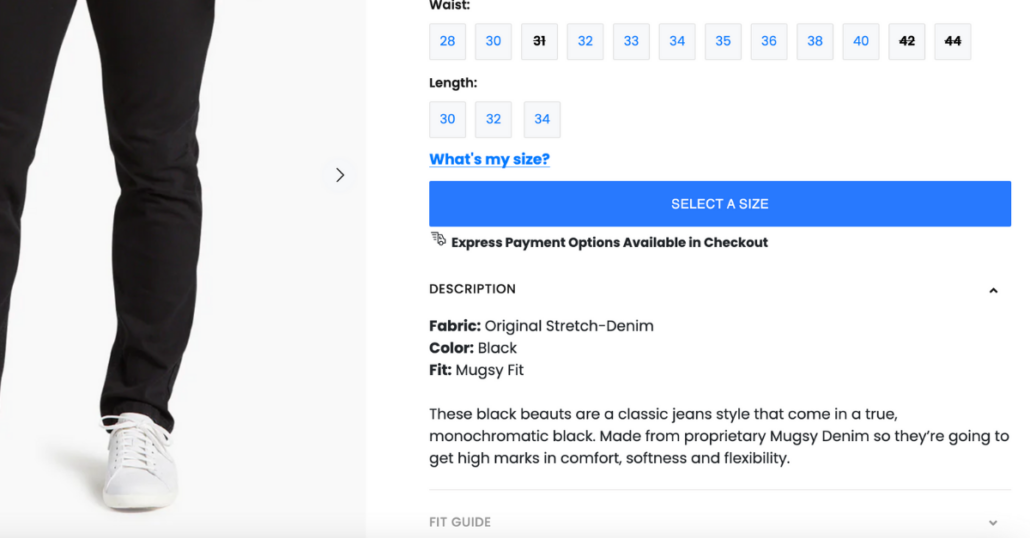
Best eCommerce product pages: The checklist
Creating the best eCommerce product pages is a healthy mix of art and science, requiring a keen understanding of consumer psychology and design principles. Here’s a list of over 200 words, incorporating the phrases “product page eCommerce,” “eCommerce product page examples,” and “examples of a product” to guide you in crafting exceptional product pages.
- High-Quality Images and Videos: Top-notch visuals are non-negotiable. High-quality images include clear, high-resolution images from multiple angles and videos demonstrating the used product. For instance, a fashion item should have pictures from different perspectives and, if possible, a video of a model wearing it.
- Engaging Product Descriptions: Write compelling, informative, and concise descriptions. Highlight key features, benefits, and the unique value proposition of your product. Good eCommerce product page examples use storytelling to connect emotionally with the customer.
- Clear Call-to-Action (CTA): Your CTA buttons like “Add to Cart” or “Buy Now” should be prominently displayed and easy to find.
- User Reviews and Ratings: Incorporate customer reviews and ratings prominently on your product pages. They provide social proof and help build trust.
- Mobile Optimization: Make sure your online product pages are mobile-friendly, given the growing trend of mobile eCommerce.
- User-Friendly Navigation: Navigation should be intuitive, making it easy for customers to find what they want.
- Product Variations: Display options like sizes, colors, or models. Use dropdowns or swatches for easy selection.
- Pricing and Availability Information: Clearly state the price, any ongoing discounts, and stock availability.
- Shipping and Return Information: Include shipping costs, delivery times, and return policies.
- Related Products and Upsells: Show related products or accessories to encourage additional purchases.
- Technical Specifications: For specialized products, include detailed specifications.
- Interactive Elements: Use elements like size guides, color pickers, or 360-degree views to enhance user engagement.
You can create effective and engaging eCommerce product pages by adhering to this checklist. Each element is crucial in guiding the customer through their purchasing journey, enhancing their overall experience, and increasing the likelihood of conversion.
What is the best product? The importance of the page
Creating an engaging and effective product listing on your website involves several nuanced strategies crucial for capturing and maintaining customer interest. One thing stands out when we look at successful product page examples: they all excel in showcasing their products through high-quality visuals. These pages use clear, crisp images and often incorporate videos demonstrating the product, providing a comprehensive view that still images alone cannot offer.
Great product pages also excel in storytelling. They don’t just list the features of a product; they weave these features into a compelling narrative that highlights the product’s benefits and unique value proposition. This approach makes the product relatable and desirable, creating an emotional connection with potential buyers.
Clear pricing

When crafting your products page, clarity in pricing and availability is paramount. Customers appreciate transparency, so presenting cost information and stock status upfront is essential. This honesty builds trust and can reduce cart abandonment rates.
Moreover, the overall user experience on your product page is critical. The design of your page should be clean and easy-to-navigate, making it easy for customers to scroll and find information. This cleanliness includes ensuring that your pages are optimized for mobile devices, since a notable amount of online shopping happens via smartphones.
Incorporating customer reviews and testimonials adds a layer of social proof, enhancing credibility and trust in your product. These real-life endorsements can be powerful in influencing purchasing decisions.
Lastly, a clear and compelling call to action is crucial. It should guide the customer smoothly from browsing to purchasing, making the process as effortless as possible. This seamlessness in the customer journey can significantly impact conversion rates.
Bottom Line
In essence, the best practices for listing a product on your site involve a blend of high-quality visual presentation, engaging storytelling, transparency in pricing, an intuitive user experience, the strategic use of customer reviews, and a compelling call to action. Each one of these items plays an important role in creating a product page that attracts visitors and converts visitors into customers.












